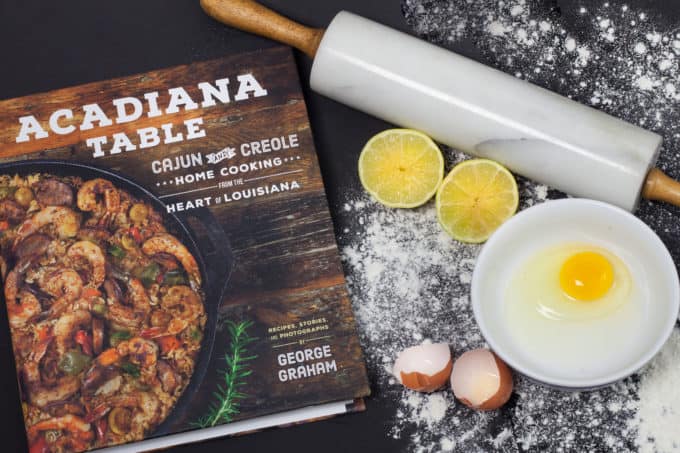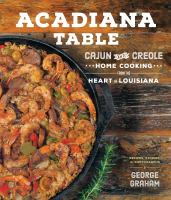
9
AugIt Takes a Stretch
 You must have a favorite author. Someone you turn to when the rest of the world seems in chaos. Someone who is as comfortable to be with as your warm fuzzy slippers and a chair beside the fireplace. Perhaps it is Jamie Ford or Susan Meissner (two of my favorites) whose lyrical stories carry you back in time and make you fall in love with their characters. Or maybe you are addicted to Mary Higgins Clark or Louise Penny, and you cannot wait to settle down with their latest creations in your hands.
You must have a favorite author. Someone you turn to when the rest of the world seems in chaos. Someone who is as comfortable to be with as your warm fuzzy slippers and a chair beside the fireplace. Perhaps it is Jamie Ford or Susan Meissner (two of my favorites) whose lyrical stories carry you back in time and make you fall in love with their characters. Or maybe you are addicted to Mary Higgins Clark or Louise Penny, and you cannot wait to settle down with their latest creations in your hands.
While there is something magical and wonderful about those treasured authors, there is also something to be said for those books that you never ever thought you would read, and suddenly you do. Perhaps you’ve been astonished when your world expands after being stretched by a story or concept that greeted you when you dared to open a book that wasn’t part of your regular repertoire.
Every month I lead between four or five book clubs. I know! I should have my head examined. Still, I enjoy each and every one of them. When I started these groups, I surveyed my readers to see what type of books they loved to read. Many of them preferred mysteries. Hands down! Ironically, it is a rare month now when I select a mystery for a book club read. When it comes to this genre, I find there isn’t a lot to talk about in a group. Trust me, I’ve tried. Once you know “who done it,” the conversation tends to be a bit sparse. So I decided to choose a wide range of books and topics instead. And yes, I like to stretch my readers. Actually, I like to stretch myself, too. Sometimes this means I pick a total flop. This doesn’t bother me, though. We’ve had the most engaging conversations even when the book choice is a bust.
An example of this happened recently. The Spy Wore Red by Aline, Countess of the Romanones was a big hit with my book clubs. Everyone loved the suspense in this true life story of a World War II spy. With this success behind me, I decided a similar read entitled A Spy Among Friends by Ben Macintyre was appropriate. Boy, was I wrong. This was the story of a friendship between two spies, Kim Philby and Nicholas Elliott, and the years that Philby deceived both MI6 and the CIA. While we had a lot to discuss, the style of writing was rather dry for most of my readers. Nevertheless, we learned a lot about the circle of Cambridge University friends that the British intelligence recruited. Certainly, our minds were stretched.
Over the years my book clubbers have read a variety of genres that they might not have tried on their own. While we covered classics like Rebecca by Daphne Du Maurier and A Tree Grows in Brooklyn by Margaret Smith, we have also tried a western or two like True Grit by Charles Portis and post-apocalyptic science fiction like Station Eleven by Emily St. John Mandel. On occasion we jumped into young readers like Skating With the Statue of Liberty by Susan Lynn Meyer or The Book Thief by Markus Zusak. Why? Why not! Challenge accepted.
If you’re willing to stretch your definition of “good reads,” you might be drawn into another reader’s obsessions as well. I have a coworker who loves books about cats, any and all cats. Who am I kidding? I’m surrounded by coworkers who read cat books. To be honest, felines don’t always tickle my fancy as characters but, lo and behold, I found myself swept into a picture book called Caramba by Marie-Louise Gay when I saw it on my coworker’s desk. Now I’m addicted. I’m hoping Caramba, the cat who can’t fly, has many more stories to discover.
Likewise my husband has certain topics that fascinate him and I’m not sure if there’s any rhyme or reason for them. For a while Appalachian history captured his interest. For several nights in a row I fell asleep as he read out loud Night Comes to the Cumberlands by Harry M. Caudill. Soon I became intrigued by Appalachia as well. When Hillbilly Elegy by J.D. Vance was hot off the press, I raced to get a copy. Later, when my husband’s curiosity shifted to the topic of North Korea, I followed suit. A Thousand Miles to Freedom by Eunsun Kim and North Korea Undercover by John Sweeney are two books I would never have touched without my husband’s influence. It seems that other people’s obsessions are catchy.
Truth be told, I enjoy being stretched. I bet you do too! In the words of Charles Scribner, “Reading is a means of thinking with another person’s mind; it forces you to stretch your own.” The only problem is finding enough time to fit it all in. I’d highly recommend trying something completely new. You might even win a prize if you take the opportunity to fill out our Summer Reader’s Bingo in the process. Consider some of the categories: “A Book With a Beach Setting,” “A Book Set in Winter,” or “A Book With a Food Theme.” Go ahead… give it a chance. What have you got to lose?
Nancy Ling is the Outreach Librarian at the Morrill Memorial Library in Norwood, Massachusetts. Read Nancy’s column in the August 9th issue of the Norwood Transcript and Bulletin.

2
AugPolo, Picnics, and People Watching
 Pop quiz: Where can you show off your favorite sundress–or shorts, sip champagne–or soda, and stroll around an enormous field tamping down divots while kids cavort alongside canines, just over an hour away? (Hint: horses are involved.) Answer… at the Newport International Polo grounds in Portsmouth, RI. When friends invited us to join their party for an evening of polo this past Saturday I was all in, especially when I found out my four-footed companion was also welcome.
Pop quiz: Where can you show off your favorite sundress–or shorts, sip champagne–or soda, and stroll around an enormous field tamping down divots while kids cavort alongside canines, just over an hour away? (Hint: horses are involved.) Answer… at the Newport International Polo grounds in Portsmouth, RI. When friends invited us to join their party for an evening of polo this past Saturday I was all in, especially when I found out my four-footed companion was also welcome.
For over 130 years, polo matches have been among Newport’s grandest and most popular traditions–a legacy from the Gilded Age. I’m not the only Morrill Memorial Library staff member, it appears, to experience its charms. Hearing that I was going to watch USA take on Ireland the following day, Lydia, who oversees the excellent Technical Services Dept. in the fourth floor “stucco tower,” said “You’ll love it!” and suggested I bring along the library’s brand new picnic basket.
Among the Norwood Library’s circulating collection of non-traditional items, aka the “library of things,” is a woven, gingham-lined picnic hamper complete with stakes for securing your blanket, a paperback of picnic recipes, and a variety of wine accessories. I added some pasta and pesto salad, two bottles of vino—strictly to test out the corkscrew and spout, of course–grabbed a couple of lawn chairs, and hit the road.
70 minutes later, approaching the linden tree- and fieldstone wall-lined entrance to historic Glen Farm, we caught the strains of Irish music and the heady aroma of horses and grilling hamburgers. Our hosts had thoughtfully reserved a tailgate spot, canvas awning included, and were firing up the barby. If you missed the online registration for one of these coveted spaces back in January, not to worry. Pony up $15 and you can park your car as well as yourself and your cooler mere yards from the action.
The pre-polo festivities—a promenade around the grassy pitch the size of nine football fields—are part of the fun. Some spectators really get into the spirit. Attired in green, orange, and white, one group displayed their unbridled patriotism by planting a dozen little flags of Ireland in the turf next to a beautiful Irish picnic blanket. No sign of soda bread but the Guinness was flowing freely.
It’s all about the people and pup watching. Observing a cameraman crouched down pointing his oversize lens toward us, I instinctively straightened up. Wait, was he actually zooming in on my companion’s well-turned ankle? But no, his subject appeared to be my rather comical-looking, though much beloved, hound.
At 5:00 sharp the mounted polo ponies–more like 1,000 lb. thoroughbreds–entered the pitch and the players were introduced. We stood for the Irish and American national anthems, sent up a rousing cheer, and the game was on! Of the four home team competitors three were women, including a father/daughter duo. Players score by driving a solid white ball into the opposing team’s goal using a long-handled mallet. The match is comprised of six 7-minute periods, or chukkas, between which tired mounts are substituted for fresh ones. The action is fast and furious.
During half-time, spectators of all sizes and breeds swarm the field in the traditional divot-dance to flatten down the sod displaced by horseshoes. Just before play resumed, an Australian sheep dog cut loose and charged back onto the pitch in a misguided attempt to herd the flock. The straight-shooting British announcer (“There was no one in front of the goal and she still missed the shot—inconceivable!”) was not amused. The disgraced dog owner remained anonymous.
We noshed on your basic summer fare–burgers, franks, and salad—while our neighbors nibbled on bacon-wrapped scallops and deviled eggs. Newport Polo attracts a certain champagne and caviar clientele, after all; the queue for Veuve Clicquot was at least as long as the line for the porta-potties.
After a hard-fought contest, Team USA prevailed 8-7. The crowd then lined the perimeter of the pitch to high five the riders as they made their final circuit. Momentarily distracted, I failed to notice my little leashed buddy had scaled the low barrier to participate in the celebratory send-off. Somehow I managed to save him from certain death—or at least a badly bruised paw—a nanosecond before the horses thundered past. I opted to forgo the autograph signing, champagne toast and trophy presentation, deciding I’d had enough excitement for one day.
From The Golden Summers—An Antic History of Newport by Richard O’Connor, I learned that polo was first introduced to the United States in Newport, at the Westchester Polo Club, in 1876. Polo originated in Persia (modern-day Iran) sometime between the 6th century BC and the 1st century AD. Initially it was a training game for the cavalry, often the king’s guard or other elite troops. The sport is now played in 77 countries, with more than 275 polo clubs registered with the U.S. Polo Association.
For delving into the finer points of the game, I recommend reading As to Polo by William Cameron Forbes. Former owner of the Forbes Estate recently purchased by the Town of Norwood, the author hosted matches on the grounds, where his favorite polo pony is buried. The Minuteman Library Network also carries The Polo Primer: a Guide for Players and Spectators by Steven D. Price, as well as Allan Forbes’s Sport in Norfolk County. But to experience polo up close and personal, saddle up and head to the City by the Sea on any Saturday afternoon from now through September. And the next time you’re in the library, “chukka” out the picnic basket and all the other fun and functional items we lend for free, including a set of backyard horseshoes.
April Cushing is the Adult and Information Services Supervisor at the Morrill Memorial Library in Norwood, Mass. Read April’s column in the August 2nd edition of the Norwood Transcript & Bulletin.

26
JulChill Out, New England
 We all know that one of the great benefits of living in New England is that we get to experience all the seasons. Our iconic foliage draws busloads of tourists every autumn, we usually get to have a white winter holiday season, and our landscape becomes furiously and gloriously alive every spring. As a result, our New England summers can feel all too brief, and many residents look forward to summer all the rest of the year.
We all know that one of the great benefits of living in New England is that we get to experience all the seasons. Our iconic foliage draws busloads of tourists every autumn, we usually get to have a white winter holiday season, and our landscape becomes furiously and gloriously alive every spring. As a result, our New England summers can feel all too brief, and many residents look forward to summer all the rest of the year.
While we’re busy bundling up for the other seasons though, we can sometimes forget just how hot and humid our New England summers can be. Heat waves seem to surprise us because they don’t happen very often in the course of a year – remember that stretch of 90+ degree heat a few weeks ago? Brutal, right? And no wonder we feel this way – in the course of June 2018 we went from chilly spring temperatures in the 40s to blazing 92F, according to AccuWeather.com. That’s a pretty big difference, especially after what seemed like a prolonged winter.
I’m fully aware that we don’t deal with nearly the temperature extremes experienced in other parts of the United States or the world. For instance, according to Weather.com the city of Quriyat in Oman in the Middle East just broke a world record for the highest low temperature in a 24-hour period, a whopping 108.7F. However, New England is quite humid, and therefore we tend to “feel” temperatures more acutely. In the course of a year, our weather changes from -40F to over 100F, with some areas of our region experiencing temperatures more extreme in either direction. From freezing pipes and frost heaves to the baking sun and high humidity, our roads and buildings have to stand up to a lot.
At this point, you’re probably asking yourself if I’m seriously writing an article about the weather. (In May she wrote about statistics and algorithms in dating apps, and this month it’s the weather? Does this lady even get out?) Fooled you! I’m actually writing about how to keep cool and comfy in the summer without air conditioning at home. On some level we’re all getting used to air conditioning in public buildings, but as long as you don’t have a health condition that necessitates cool temps, do you need to invest in air conditioning at home in the Northeast?
There are some good reasons to go without AC if you can help it. Lowering your electric bill is a good motivation, since once you turn on the AC unit there’s a strong temptation to leave it running for most of the day. The cost of an air conditioner can also be prohibitive, as well as the hassle of properly installing the unit. Also, there’s a lot of joy in hearing birdsong and other sounds of summer coming through the window, which is drowned out by the chugging of an air conditioner. Plus, there’s the principle of the matter – there’s something perverse about turning on an air conditioner for a small amount of comfort when human activity is responsible for rising global temperatures in the first place.
Passive cooling measures are easier than you think; they just take a little bit of planning. It’s an awful feeling to get to work and realize a storm is heading your way on a day you decided to leave some windows open to catch the breeze. A few easy tips include: close the shades during the day, especially on the sides of your house that catch the sun; close the windows on the sunny sides of your house, though you may decide to leave windows cracked on the shady sides of your house if cool air is blowing in; as soon as the evening temperature drops lower than the temperature inside your house, open those windows and enjoy the night breeze; use window fans to draw in extra cool night air if the day has been especially hot, making sure to crack another window to help the fan work as efficiently as possible; avoid stove or oven cooking if you can help it, and instead eat cold foods like salad or use a slow cooker to keep from heating up your kitchen. For even more practical tips for keeping cool and conserving energy, especially if you’re planning a remodel project, check out these books from the library: The Carbon Buster’s Home Energy Handbook by Godo Stoyke, The Energy Wise Home by Jeff Dondero, True Green Home by Kim McKay, and This Cold House by Colin Smith.
We have lots of cookbooks with slow cooker recipes. Browse our cookbook section on the Mezzanine level next time you’re in, and keep an eye out for titles like The Everything Healthy Slow Cooker Cookbook, The Slow Cooker Revolution, and The Chef and the Slow Cooker.
Swim, wear loose fitting clothing, eat ice cream – and when we hit a streak of 90+ degree weather and all else fails – come to the library. We have free air conditioning, and lots of books and great programs all summer long.
Liz Reed is an Adult and Information Services Librarian at the Morrill Memorial Library in Norwood, Massachusetts. Read Liz’s column in the July 26, 2018 issue of the Norwood Transcript and Bulletin.

19
JulFirst, You Take a Cajun Swamp Tour. Next, You Make a Creole Roux.
 In The World on a Plate (2014), Mina Holland describes 40 world cuisines and the “stories behind them.” Reading her book, you travel across Europe and down through the Middle East, east to Asia and south to Africa. She ends the book with the “melting pots” of the Americas: the Dutch, Spanish and Portuguese influences in South America and the French, Polish, Germany, African and Asian inspirations to the north.
In The World on a Plate (2014), Mina Holland describes 40 world cuisines and the “stories behind them.” Reading her book, you travel across Europe and down through the Middle East, east to Asia and south to Africa. She ends the book with the “melting pots” of the Americas: the Dutch, Spanish and Portuguese influences in South America and the French, Polish, Germany, African and Asian inspirations to the north.
Of these 40 world’s cuisines, only the regions of California and Louisiana are included a mention in Holland’s book. A California Salad is dressed with Asian ingredients. BBQ corn is smothered with Cajun seasoning, accompanied by crawfish, and grits. Holland’s explanation is that most of Europe left its mark on the Northeast and the Midwest. Spain, through Mexico, impacted the South-Northwest. Yet, Louisiana cuisine is a unique rich blend of French, Spanish, Caribbean and Native American cultures and food.
We’ve heard of Cajun Shrimp. Creole Gumbo. Yet, Cajun and Creole cooking can be confused. They are very separate – and somewhat the same. A Louisiana travel site simplifies the differences by explaining that Creole is “city food” and Cajun is “country.” Another clarification is that Creole uses tomatoes and Cajun never does. Think gumbo and jambalaya and this explanation can fit.
The Cajuns were immigrants from French Canada – the Acadians. Acadia was a colony of New France that included parts of Quebec, the Maritime provinces (New Brunswick, Nova Scotia, and Prince Edward Island), and what we know now as the state of Maine. As early as the mid-1700s, Acadians traveled south to Louisiana on the Mississippi River or by ship along the Atlantic. In Louisiana, “Acadian” was shortened, very simply, to Cajun. The Acadians brought their spices and foods with them to the Gulf Coast.
Creole in French means “a person not indigenous to the country or land.” The word in Spanish is criollo. In Louisiana the meaning is more distinct with the Creole culture sometimes described as a blend of the French, Spanish, African and Native American.
I was lucky enough to visit Louisiana, specifically New Orleans, during one of the hottest weeks of this past June – the last full week before the Fourth of July holiday. As I grew to understand (from Lyft drivers and bartenders), the tourists vacate New Orleans after July 4. The tourist season officially ends then and tired New Orleans hotel and restaurant and bar staff finally get a break from the hectic, nearly year-round party in the Big Easy.
The American Library Association knows its members well – librarians who are on lean personal and professional budgets. For that reason, ALA’s conferences are held in some of the hottest locales in the country in the summer (Anaheim, Washington DC, and Las Vegas) and the coldest cities in the winter (Chicago, Boston, and Indianapolis).
This year was no exception, of course, when the NOLA (New Orleans, LA) humidity made 95 degree weather practically unbearable during the conference held June 21 through the 26 at the Ernest N. Morial Convention Center along the Mississippi River.
My conference week (spent mainly indoors in the kilometer-long air-conditioned convention center) ended midweek and two of my hardy, best friends since 7th grade arrived for a girls-only Louisiana adventure. The three of us moved into a lovely hotel, complete with center garden, just steps from Bourbon Street. Together, we braved the New Orleans heat, learned of its illustrious history, and ate our way through its impossibly-delicious cuisine for five wonderful days.
I had already discovered the best fresh, hot beignets, bowls of gumbo, chargrilled oysters, and sippable drinks before my girlfriends arrived. So, we gobbled oysters at Dragos and sipped Sazeracs at the Public Belt. We hopped on and off the tour bus and visited the Garden District, Tremé, the French Market, and Canal and Tchoupitoulis Streets. At the original Café du Monde we guzzled coffee accompanied by beignets that were smothered in mounds of confectionary sugar (somewhat like puffed fried dough).
We braved a buggy ride behind a hairy mule (the mules fare much better than horses in the heat) and learned oodles about the architecture of New Orleans, including the restrictions for homes in the Historic District. We walked with some trepidation along Bourbon Street with its rowdy crowds, crisscrossing the French Quarter to our chosen nightly restaurants and cocktail bars. We tasted a Pimm’s Cup, a French 75, and a Viuex Carre in a Nick and Nora finely-etched glass.
There were many highlights of our girls’ vacation, but two are of the type none of us will ever forget.
The first was a swamp tour along the West Pearl River, reached by a 45-minute drive north of New Orleans and over the eight-mile bridge spanning Lake Pontchartrain. The bridge is new and it sits directly next to the ruins of the previous one destroyed in 2005 by Hurricane Katrina. Once on the bayou, our tour guide commanded his pontoon boat for a little over 2 hours along the swamps lined with Bald Cypress trees and filled with very visible alligators. He sidled up to a luscious shrub and offered us a pungent bay leaf, different than we had ever smelled before. He pulled up close to where a red fern grew from a lone river log. We three women from California and Massachusetts, and our local tour guide from the bayou, spent much of the time talking recipes and cuisine, serenaded by afternoon cicadas and shaded by overhanging swamp growth.
The second experience was a hands-on cooking class at the New Orleans Cooking School. While it is a business that caters to the tourist, it was also an adventure like no other. For 2-1/2 hours we three each had our own kitchen island complete with induction stove and all the equipment and ingredients we needed to make Cajun Gumbo, Beef Grillades with Grits, and Bananas Foster (complete with flame and magic dust.) We drank spicy Bloody Marys, local craft beer, and ate our own creation of three courses of deliciousness accompanied by our teacher/chef’s stories of Cajun and Creole lore.
There are many books throughout the libraries of the Minuteman Library Network. We have four of the best that will help you to navigate the Cajun and Creole cuisines.
Ten years after Hurricane Katrina, Cooking Up a Storm (2005) was re-published in 2015. The book was originally compiled as recipes “lost and found” by the Times-Picayune and stories and recipes of New Orleans’ culinary heritage. George Graham’s Acadiana Table (2016) includes traditional Louisiana recipes and some brand-new options. We have John Besh’s Besh Big Easy (2016). The author of the bestselling cookbook My New Orleans (2009), owner of twelve restaurants and host of two public television shows has written a fourth book about his native Creole cuisine. Another television cooking celebrity, Kevin Belton, has written New Orleans Kitchen, published this year. If you can’t make a trip to New Orleans, you can let the good times roll, Cajun or Creole-style in your own home.
Charlotte Canelli is the Director of the Morrill Memorial Library in Norwood, Massachusetts. Read Charlotte’s column in the July 19, 2018 edition of the Norwood Transcript and Bulletin.

12
JulCity Girl, Country Girl
 As a kid I dreamed of living in the Big City. On weekends my mom and I drove into Boston from the suburbs to shop at the iconic Filene’s Basement. I got such a thrill out of walking through the scary “Combat Zone,” past shops and restaurants in Chinatown, and arriving at “The Basement,” where we shielded each other and tried on clothes in the aisles, and I learned math by figuring out the “automatic markdowns.” The variety of different people in the city fascinated me and I longed to live among them some day.
As a kid I dreamed of living in the Big City. On weekends my mom and I drove into Boston from the suburbs to shop at the iconic Filene’s Basement. I got such a thrill out of walking through the scary “Combat Zone,” past shops and restaurants in Chinatown, and arriving at “The Basement,” where we shielded each other and tried on clothes in the aisles, and I learned math by figuring out the “automatic markdowns.” The variety of different people in the city fascinated me and I longed to live among them some day.
Indeed, after college I moved to Boston where I lived for the next 20 years or so- in a cockroach-infested apartment in Brighton, in three different makeshift artist lofts downtown, and then in a duplex I owned with a friend in Jamaica Plain. I got married, my husband and I consolidated our two households of “stuff” into one apartment, my friend got married and had two children, they moved out, and we decided to follow suit. We felt cramped and had become homebodies taking little advantage of the convenience of nearby restaurants and amenities or our proximity to the T. We also got sick of the occasional sounds of gunshots and all-night parties of nearby neighbors.
In 2015 we took the plunge and moved to Holliston, to a home we fell in love with- a house on a two and a half acre lot with a garden, a swimming pool, a brook, lovely landscaping, and lots of privacy. Oh, and a chicken coop. We went from one extreme to the other, and while I had dabbled in container gardening and watched my parents manicuring their lawn and planting shrubs and annuals, I needed a crash course in country living!
I set a goal, to at least avoid killing all the beautiful plants during the first year. With books like Pruning Basics by David Squire I did teach myself “the basics” of pruning rhododendrons, roses of Sharon, and lilacs. I kept a log book of what came up when: hellebore and daffodils first, followed by irises and poppies, and at this time of year various lilies, daisies and roses. Martha Stewart’s recent Martha’s Flowers provided great ideas for arranging and displaying cut flowers to bring the beauty of the yard inside the house.
Facing a daunting fenced-in garden, I set to work watching YouTube videos and scouring Improving Your Soil by Keith Reid. I learned about prepping soil, rented a rototiller, bought seeds, and planned the layout. Companion planting (see Louise Riotte’s Carrots Love Tomatoes) became a passion. I ended up with too many zucchinis and cucumbers, and relied on Bittman’s trusty How to Cook Everything Vegetarian to make use of it all. Imagine my pride serving guests garden-fresh salads and arugula walnut pesto, followed by cucumber mint sorbet.
The property did not come with chickens, and I insisted on waiting for a year before acquiring any. We had enough to learn during the first year. On the anniversary of moving in, I brought 6 tiny chicks home and delved into the study of keeping them happy and alive. For anyone with the capacity and will to venture into chicken parenting, the library has Storey’s Guide to Raising Chickens, and A Kid’s Guide to Keeping Chickens, if the children want to help. To get a feel for the way chicken-owners become attached to their flocks, watch the hilarious documentary Chicken People.
Of course, with chickens come abundant eggs. We didn’t realize just how many eggs! Fortunately I received Rachel Khong’s All About Eggs, and Eggs, by Michel Roux, as gifts. For the library’s volunteer appreciation get-together I made “Green Goddess Deviled Eggs” from the library’s D’lish Deviled Eggs cookbook, and they got rave reviews.
Our country oasis surprised us over and over. I discovered Concord grapes growing along a fence and into the trees, and learned a bit about canning and preserving (see DIY Canning). I posted a photo of a weird brain-like mushroom and found out we had precious morels! This prompted the purchase of Foraging New England. Although strange mushrooms frighten me, I delight in harvesting wild berries, chard, and rogue tomato plants that manage to self-seed in the woods.
Home ownership is not all fun and games though. Having never maintained a pool before, I discovered What Color is Your Swimming Pool. With so much space to fill with more and more stuff, I finally read Kondo’s The Life-Changing Magic of Tidying Up, and learned to de-clutter. Just because you have room for it doesn’t mean you need to keep it and crowd your living space with junk.
Sometimes I miss the variety of restaurants in Boston, and I don’t like the long ride to and from the city when visiting friends or attending events, but at this stage in life, I definitely prefer being a country girl. A Zen-like calm comes over me while gardening, and after reading my grandmother’s memoir about farm life in Lithuania, I wonder whether this knack is in my DNA. As I listen to songbirds, “peeper” frogs, and even the silence of winter- when I smile watching the silly chickens or discovering that the peonies have bloomed, I have no regrets about moving.
Lydia Sampson is the Head of the Technical Services Dept. at the Morrill Memorial Library in Norwood, Massachusetts. Read Lydia’s column in the July 12, 2018 edition of the Norwood Transcript and Bulletin.
